All about feeding cherries
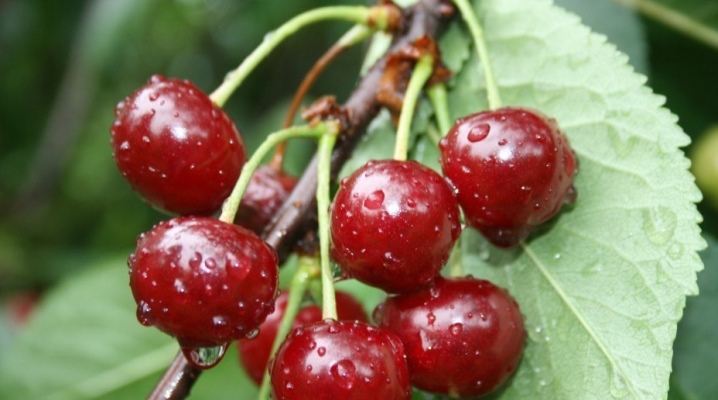
Sweet and juicy fruits in the garden are the dream of many gardeners and owners of personal subsidiary plots. But to make this dream come true, you will have to work hard. And for starters - learn everything about feeding cherries (if it is decided to grow this particular crop).
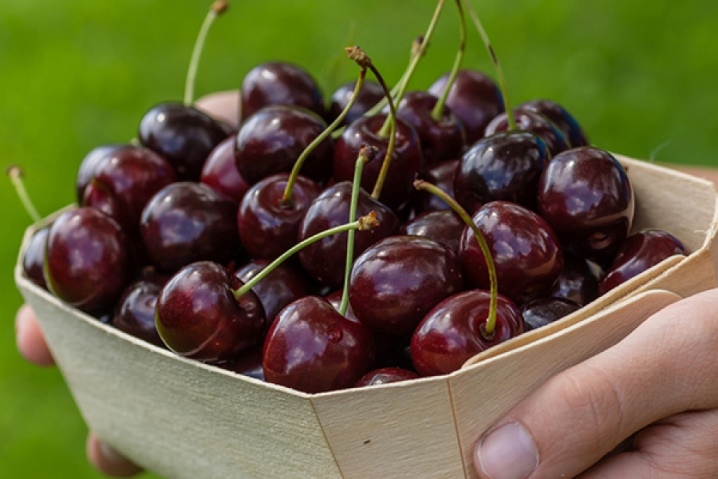
Why do you need top dressing?
It goes without saying fertilization is necessary for the cherry to bear fruit. And it did not just bring individual fruits, but ensure a good harvest. Any experienced gardener will confidently say that only fed plants are grown without problems. Even if the bush has been fed in the fall, in the spring it is still necessary to do this procedure again, then the development of the cherry will be more efficient.

Fertilizers
Cherry makes rather high demands on the quality of feeding. For it, you can use both organic and mineral mixtures. Among organic substances, the following are recommended:
- dead manure;
- compost;
- chicken droppings;
- clean sawdust.

This does not mean, by the way, that any other organic fertilizers cannot be used. It is just that their use must be approached much more carefully, taking into account the experience of various farms and summer cottages. Organic loosens the earth and optimizes its structure, so the fruit becomes larger and tastier. Of the mineral and complex compositions for cherries, the following are primarily needed:
- sulfur;
- iron;
- nitrogen (like all plants, however);
- boron;
- manganese;
- phosphorus;
- potassium.
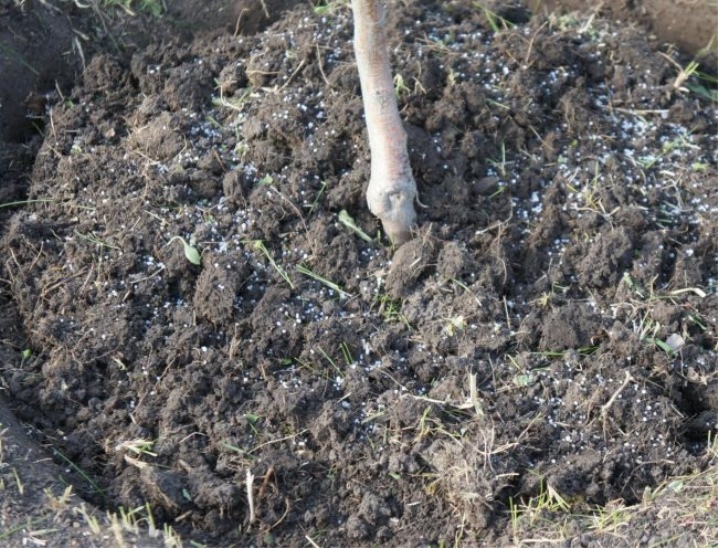
To supplement these fertilizers, the following are used:
- urea;
- superphosphate;
- potassium salts.
Important! Such additives improve the immunity of cherries. It will grow faster.
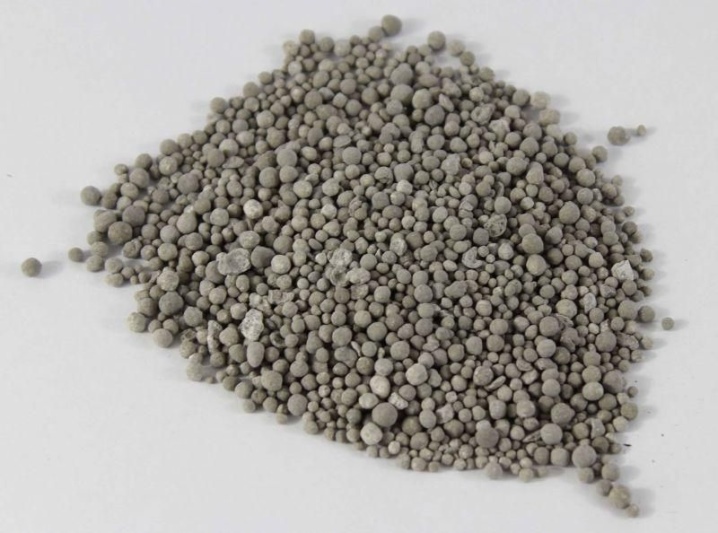
It should be noted that mineral and complex feeding has a positive effect on fruiting. It is sometimes advisable to use ammophoska and nitroammophoska. However, azofoska is also good for cherries. The main thing - avoid using nitrogen mixtures after July 15th.
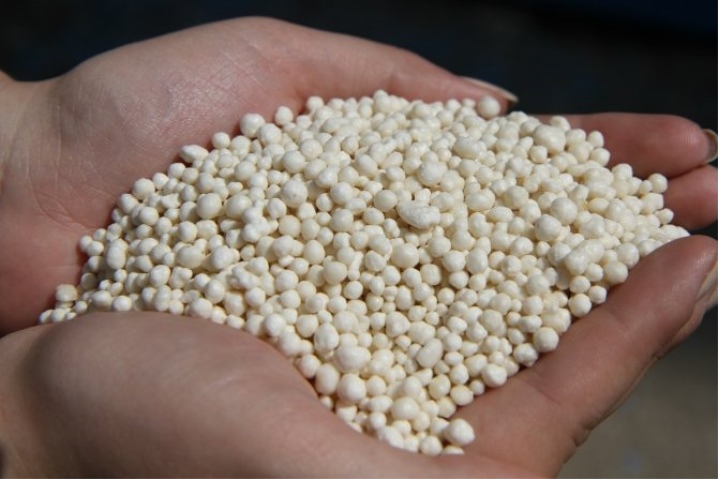
When to fertilize?
In autumn
Correctly chosen timing of autumn feeding is a very important thing for the full development of a plant. At this time, stone fruit cultures are ready to receive potent drugs. It is recommended to feed your cherries in mid to late autumn. It is best to combine this procedure with pruning to compensate for the negative impact. Trees 2–4 years old should be fed in September or October.

Proper autumn feeding for them includes superphosphate and potassium sulfate. At the age of 4–7 years, the timing of fertilization for cherries does not change. A double is put under the root either simple superphosphate. These types of fertilizers must be applied in the same amount. Additionally, before winter (after the onset of early frosts), the plants must be sprayed weak urea solution.
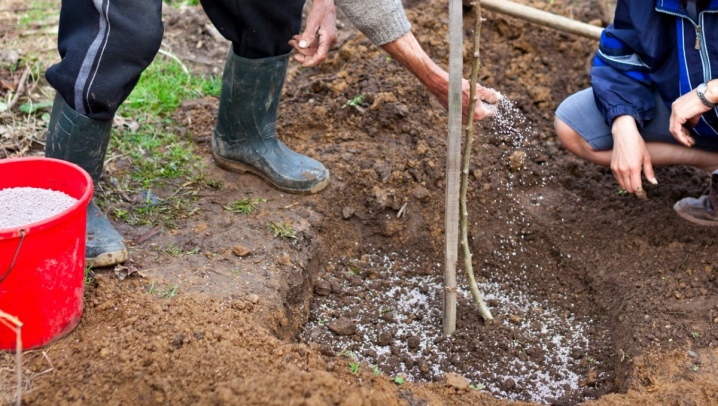
In the spring
Feeding the cherries at this moment is no less important than before the onset of cold weather.... Then many complaints that the plant does not bloom or the yield is low can be avoided. To avoid the development of pests and pathogenic organisms, they are sprayed before feeding the trees bordeaux liquid. Cherries between 2 and 4 years old are fertilized only urea or ammonium nitrate, and strictly before flowering.
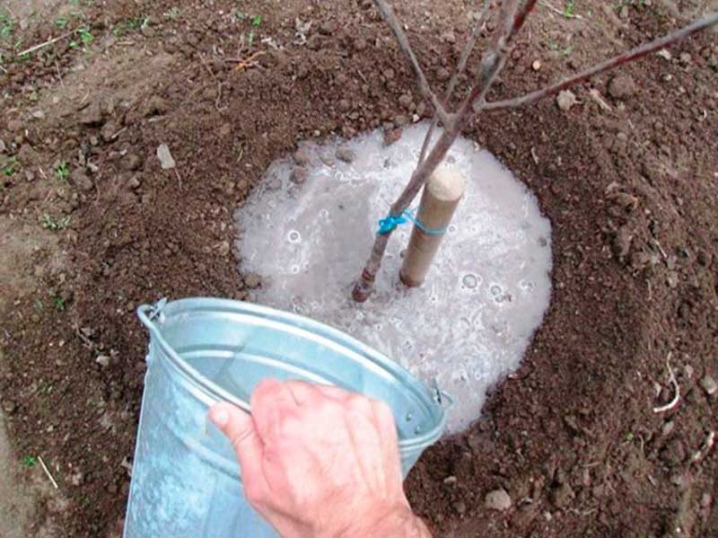
Plants over 4 years old are fed in the following cases:
- before flowering;
- during flowering;
- 2 weeks after the second fertilization.
Rules and methods
It should be noted right away that feeding "into the hole" in the first 24 months after the rooting of the plant is not carried out. Fertilizers will have to be applied by irrigating the crown and trunk, or by watering the crop at the root. Watering should go strictly in the near-stem circle. Fertilizers are placed only after intensive watering, and not before it... Dry chemicals are buried with a rake or a pitchfork, and a shovel cannot be used for this purpose.
You can spray cherries with various solutions no earlier than 2 years after planting. The trunk, foliage and root circle are thoroughly moistened during this procedure.
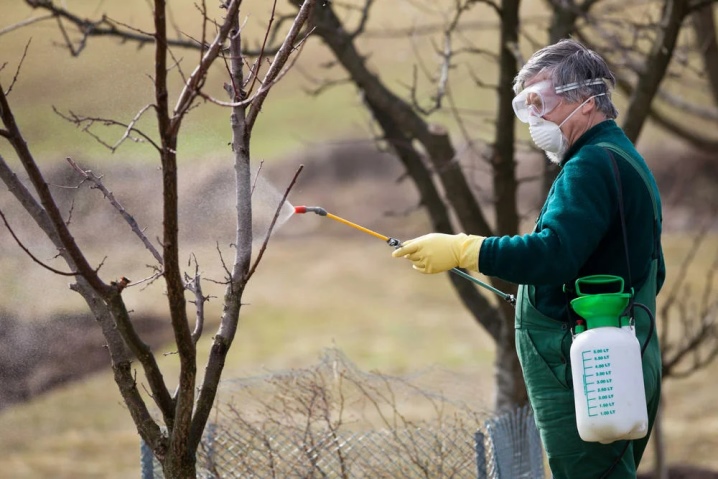
For irrigation, sprayers of a special design are used. If you need to quickly saturate the soil with useful components and not overfeed the plants, the use of green manure would be an excellent option. They will prove to be especially useful in nitrogen deficiency.
Expert advice
Agronomists note that cherries respond well to any fertilizers, but for this very reason, they must be used with caution. Overdose is more dangerous than for many other garden and horticultural crops. It is recommended to combine urea with potassium salts. For cherries of different ages, 0.05–0.3 kg of carbamide is used. To prepare its solution, take water with a temperature of +80 degrees. This temperature is most effective for dissolving.
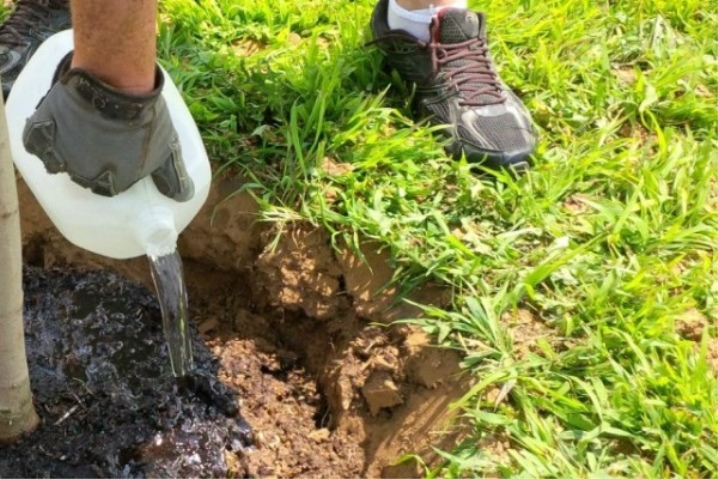
Urea can also be used to combat coccomycosis. The concentration of the solution in this case is from 3 to 5%. It should be applied in the first half of October, in extreme cases - until the 20th. Simple superphosphate it is advisable to use in conjunction with nitrogen fertilizers. And here double superphosphate Combines better with potassium salts. But at the same time, the gap between the use of superphosphate and urea, ammonium nitrate and chalk should be at least 7-10 days. On 1 tree use 0.1-0.15 kg of superphosphate.
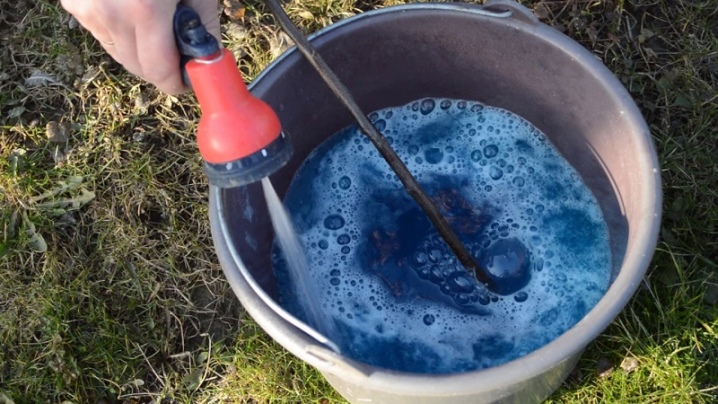
Potassium chloride for cherries it is advised to take in granular form. For your information: in common parlance it is also called "seeds". This fertilizer is recommended for supporting stone fruit plants in cold places. But it helps to increase resistance to summer heat. Potassium chloride it also makes cherry fruits sweeter, increasing the concentration of sugar in them.
Caution: This crop is moderately susceptible to chlorine. Therefore, the dosage of fertilizers containing it, including potassium salt, must be strictly observed.
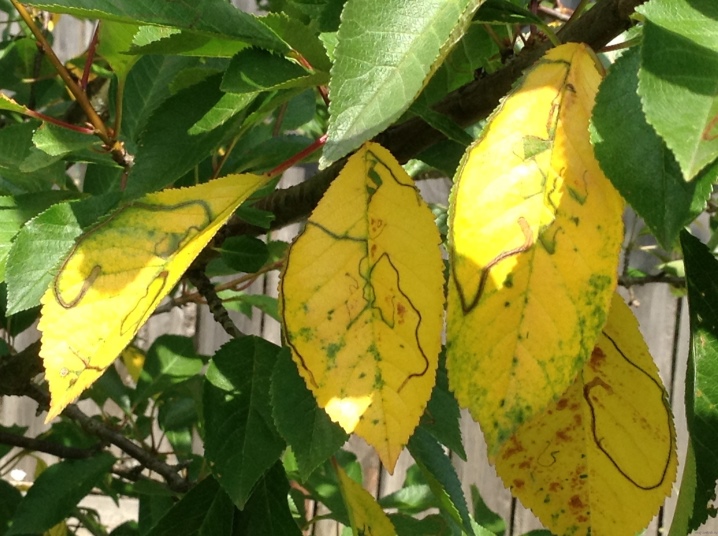
A maximum of 0.04 kg is placed on the seedling potassium salt. For an adult plant, it is permissible to use 0.1 kg of this fertilizer.
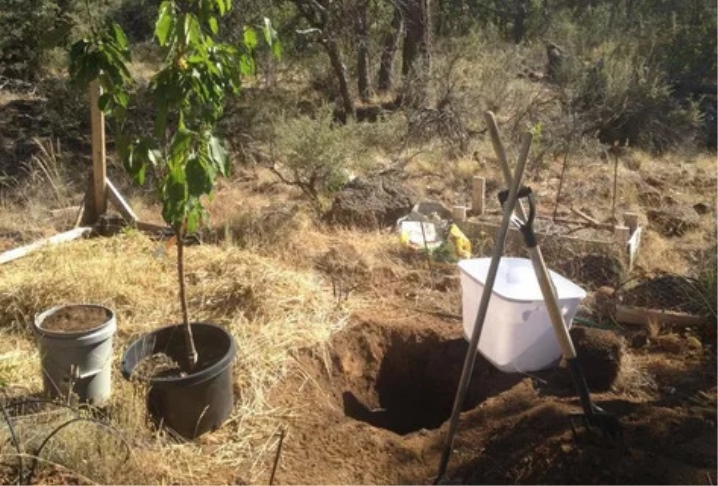
Simple ammonium nitrate can be a substitute for urea. But you can also use ammonium-potassium nitrate, which helps the growth of cherries, and makes the fruits tastier. For a seedling, 0.15 kg of ammonium-potassium nitrate is needed. For an adult tree, they already take 0.3 kg of this fertilizer. Such dosages are recommended when it is planned to replace urea with it, otherwise the manufacturer's instructions must be followed.
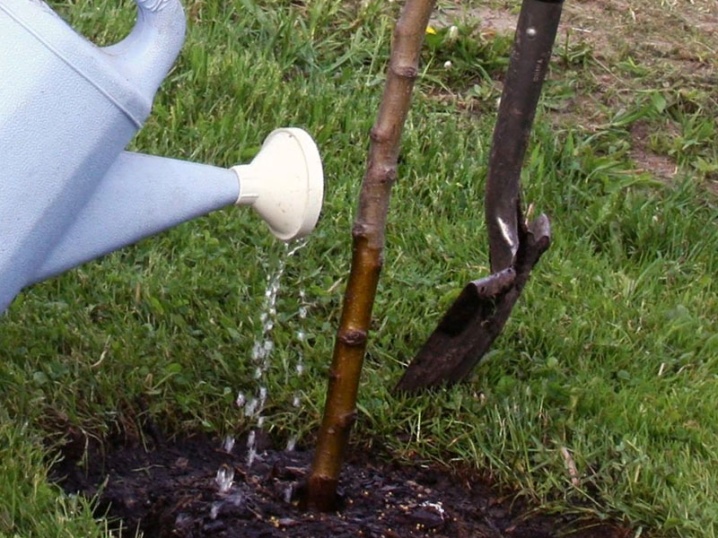
Cherry trees are also fed with compost. But this mixture must be prepared carefully, according to strict rules. At the very beginning, the container or fenced area of land is covered with peat 0.1–0.15 m thick. Vegetable waste is placed on top. Such a blank is spilled manure solution or diluted chicken droppings (with a dilution of 10 and 20 times, respectively). It is necessary to infuse the mixture for 10 days.

Additionally for 1 sq. m workpieces add the following ingredients:
- 0.4 kg of ammonium nitrate;
- 0.5 kg of double superphosphate;
- 0.2 kg of potassium sulfate.
Next, you need to put 0.1 m on top peat... If there is no peat, it is replaced with the same amount of garden soil. After 60 days under the film, the pile is thoroughly turned up. The compost will be ready in 120 days. For an adult cherry, use at least 30 kg of the mixture, and for a young seedling, about 5 kg.
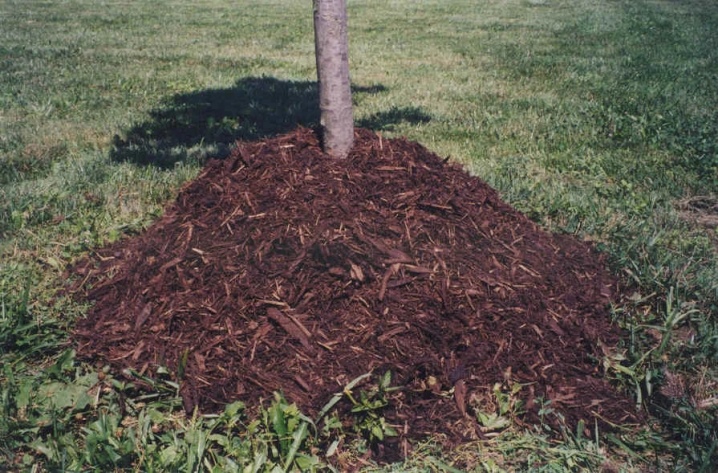
Ash are used to optimize water balance and improve metabolic processes. It will also guarantee the resistance of the culture to winter cold. To strengthen the immunity of stone fruit crops, it is recommended to use lime... And also with its help they stabilize the metabolism, increase the strength of the vascular walls. Liming is carried out every 4 or 5 years.It is especially important where regular organic feeding is carried out.
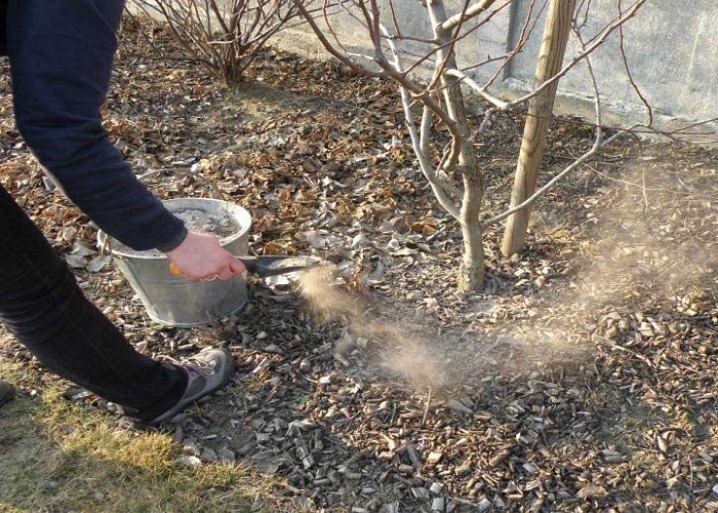
Manure the cherries are fed only after he has repacked. Otherwise, the roots of the plant can be very badly damaged. Some gardeners believe that the fertilizers applied at the time of planting are enough for 3-4 years of full development. But this expectation is not always justified. You can check it by the amount of shoot growth: if it is less than 0.3–0.4 m per year, additional feeding is required.
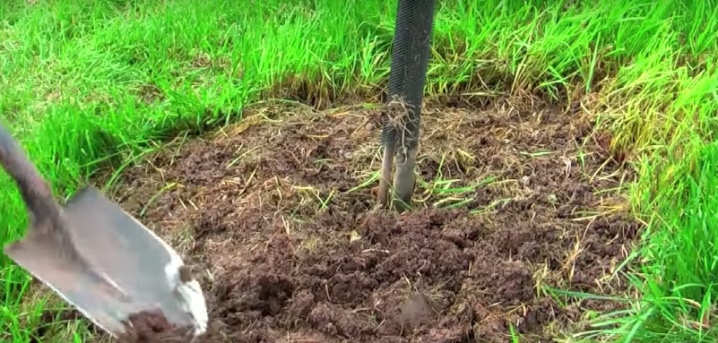
You can see everything about caring for cherries in the next video.













The comment was sent successfully.